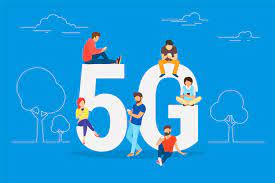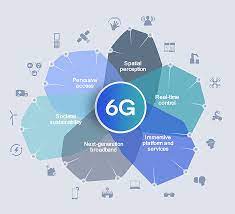
Unlocking the Future: Embracing the Power of 5G Technology
The Future of Connectivity: Exploring 5G Technology
As technology continues to advance at a rapid pace, the introduction of 5G technology has sparked excitement and anticipation among consumers and industry experts alike. Promising faster speeds, lower latency, and greater capacity, 5G is poised to revolutionize the way we connect and communicate in the digital age.
So, what exactly is 5G technology? In simple terms, 5G stands for the fifth generation of wireless technology, succeeding its predecessor, 4G LTE. While 4G has been instrumental in enabling high-speed mobile internet access and streaming services, 5G takes connectivity to a whole new level.
One of the key benefits of 5G technology is its incredible speed. With download speeds potentially reaching up to 10 gigabits per second (10 Gbps), users can expect lightning-fast downloads and seamless streaming experiences. This means that tasks that once took minutes will now be completed in mere seconds.
Lower latency is another significant advantage of 5G technology. Latency refers to the time it takes for data to travel from one point to another. With 5G, latency is expected to be reduced to as little as one millisecond, making real-time communication and interaction virtually instantaneous.
Furthermore, the increased capacity of 5G networks means that more devices can be connected simultaneously without sacrificing performance. This is particularly important as the Internet of Things (IoT) continues to grow, with billions of interconnected devices requiring reliable and efficient connectivity.
The potential applications of 5G technology are vast and varied. From enabling autonomous vehicles and smart cities to transforming healthcare delivery and enhancing virtual reality experiences, the possibilities are endless. Industries ranging from manufacturing and logistics to entertainment and education stand to benefit from the capabilities of 5G.
However, it’s essential to note that the widespread adoption of 5G technology also presents challenges. Issues such as network security, infrastructure deployment, and regulatory considerations must be carefully addressed to ensure a smooth transition to this new era of connectivity.
In conclusion, 5G technology represents a significant leap forward in our quest for faster, more reliable wireless communication. With its promise of unparalleled speed, lower latency, and increased capacity, 5G has the potential to transform how we live, work, and interact with the world around us. As we embrace this new era of connectivity, it’s crucial that we approach it with careful consideration and foresight to maximize its benefits while mitigating potential risks.
7 Common Questions About 5G Technology Answered
- What is 5G technology?
- How does 5G differ from 4G?
- What are the benefits of 5G technology?
- How fast is 5G compared to previous generations?
- What are the potential applications of 5G?
- Is 5G available everywhere?
- Are there any health concerns associated with 5G technology?
What is 5G technology?
5G technology refers to the fifth generation of wireless technology, succeeding the current 4G LTE standard. It represents a significant advancement in connectivity, offering faster speeds, lower latency, and greater capacity for data transmission. With download speeds potentially reaching up to 10 gigabits per second (10 Gbps) and latency reduced to as little as one millisecond, 5G is poised to revolutionize how we communicate and interact in the digital age. Its increased capacity also enables more devices to be connected simultaneously, paving the way for innovative applications across various industries.
How does 5G differ from 4G?
5G technology differs from 4G in several key ways. Firstly, 5G offers significantly faster speeds compared to 4G, with the potential to reach up to 10 gigabits per second (10 Gbps) download speeds. This translates to quicker downloads, smoother streaming, and overall improved user experiences. Additionally, 5G boasts lower latency, reducing the time it takes for data to travel between devices to as little as one millisecond. This near-instantaneous communication opens up possibilities for real-time applications like remote surgery and autonomous vehicles. Furthermore, 5G networks have a higher capacity, allowing for more devices to be connected simultaneously without compromising performance. These differences highlight the transformative potential of 5G technology in revolutionizing connectivity and shaping the future of communication and innovation.
What are the benefits of 5G technology?
The benefits of 5G technology are numerous and far-reaching. One of the key advantages of 5G is its exceptional speed, offering faster download and upload speeds that enable seamless streaming and quicker access to online content. Additionally, 5G technology boasts lower latency, reducing the time it takes for data to travel between devices and servers, resulting in near-instantaneous communication and real-time interaction. The increased capacity of 5G networks allows for more devices to be connected simultaneously without compromising performance, paving the way for the widespread adoption of IoT devices and applications across various industries. Overall, the benefits of 5G technology include enhanced speed, reduced latency, improved connectivity, and support for innovative technologies that have the potential to transform how we live and work in the digital age.
How fast is 5G compared to previous generations?
5G technology boasts significantly faster speeds compared to its predecessors, such as 4G LTE. While 4G networks typically offer download speeds ranging from 10 to 100 megabits per second (Mbps), 5G has the potential to reach speeds of up to 10 gigabits per second (10 Gbps). This exponential increase in speed means that tasks like downloading large files, streaming high-definition videos, and accessing data-intensive applications will be completed in a fraction of the time it takes on 4G networks. The transition to 5G represents a monumental leap forward in wireless connectivity, promising an unparalleled user experience with lightning-fast speeds and seamless performance.
What are the potential applications of 5G?
The potential applications of 5G technology are vast and diverse, spanning across various industries and sectors. With its lightning-fast speeds, ultra-low latency, and increased capacity, 5G has the capability to revolutionize how we live and work. From enabling the widespread adoption of autonomous vehicles and enhancing the efficiency of smart cities to transforming healthcare delivery through telemedicine and remote surgery, the possibilities with 5G are virtually limitless. Additionally, industries such as manufacturing, logistics, entertainment, education, and agriculture stand to benefit from the enhanced connectivity and capabilities offered by 5G technology. As we continue to explore the potential applications of 5G, it is clear that this next-generation wireless technology has the power to reshape our world in ways we have yet to imagine.
Is 5G available everywhere?
The availability of 5G technology varies depending on location and network infrastructure. While 5G deployment is rapidly expanding, it is not yet universally accessible in all areas. Major cities and urban centers tend to have more extensive 5G coverage compared to rural or remote regions. Factors such as spectrum availability, regulatory approvals, and investment in infrastructure play a significant role in determining the availability of 5G networks. As telecommunications companies continue to roll out 5G services, accessibility is expected to increase over time, but it may take some time before 5G is available everywhere on a global scale.
Are there any health concerns associated with 5G technology?
One frequently asked question regarding 5G technology is whether there are any health concerns associated with its implementation. While some individuals have expressed apprehension about the potential health effects of 5G radiation, scientific research and regulatory bodies have not found conclusive evidence linking 5G technology to adverse health outcomes. Studies conducted by organizations such as the World Health Organization (WHO) and the Federal Communications Commission (FCC) have determined that 5G radiation levels fall well within established safety guidelines. However, ongoing research and monitoring are essential to ensure that any potential health risks associated with 5G technology are thoroughly understood and appropriately addressed.


